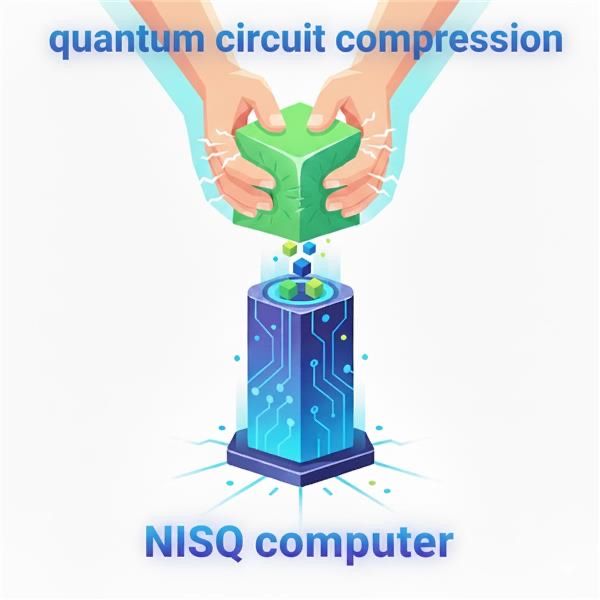Blog by Clayton Leite: QMill sets a world record in quantum circuit compression
October 15, 2025 -
By leveraging the latest advances in artificial intelligence, QMill recently developed a record-breaking method for compressing quantum circuits, bringing useful quantum computations closer in time. QMill demonstrates its capability by sharing QASM files of several benchmark circuits and their compressions. One of these circuits was compressed to just half the size of the previous best result.
Today’s quantum hardware, NISQ systems, struggle with lengthy computations because noise and decoherence cause errors that accumulate in time. Because of limited coherence time, qubits decohere before the quantum computer can finish executing deep circuits containing many quantum gates. This makes achieving scalability and quantum advantage challenging.
Therefore, quantum circuits must be compressed to use fewer elementary gates while preserving their functionality.Reducing the number of gates in a quantum circuit, and hence the run time, involves applying transformations to the circuit while preserving its original functionality.
Efficiency of the quantum circuits is paramount
Although there are myriads of ways to transform a quantum circuit, only a tiny fraction actually leads to fewer elementary gates. As a result, designing an algorithm that can reliably find a sequence of transformations to minimize the gate count — particularly to reach the absolute minimum — is extremely challenging in general.
At QMill, our mission is to develop innovative quantum algorithms that leverage NISQ hardware for practical advantage. Therefore, the efficiency of the circuits used by the algorithms is paramount to us. By leveraging the latest advances in artificial intelligence, we recently developed a new method for compressing quantum circuits.
QMill approach outperforms the state-of-art circuit optimizer
We’re excited to share that the QMill approach outperforms the state-of-the-art circuit optimizer, Quarl, across a wide range of benchmark circuits under equivalent computational budgets.
To demonstrate the capabilities of our new method, we are now sharing three benchmark circuits along with their compressed versions in QASM files utilizing the IBM gate set (includes CX, Rz, SX, and X gates):
- Circuit referred to as MOD5_4, which originally had 71 gates, was reduced to 24 gates by our method — less than half the size achieved by Quarl, which compressed it to 50 gates.
- GF2^8_MULT was reduced from 928 gates to 740, an improvement compared to 821 gates by Quarl.
- CSUM_MUX_9, with an original count of 459 gates, was compressed to 290 by our method, surpassing Quarl’s best result of 318.
You can find the QASM files for these circuits at Zenodo: Data for Quantum Circuit Compression Based on Machine Learning (IBM Eagle gate set)
Circumventing the obstacles posed by today's noisy hardware
The beauty of compression is that such advancements in efficiency bring the emergence of useful quantum computations closer in time. This is the foundational pillar of our strategy at QMill and a critical need for the entire quantum sector today. By significantly shrinking quantum circuits, we are directly circumventing the major obstacles posed by today's noisy hardware. This resource reduction turns heavy algorithms into reliable, executable computations, instantly accelerating the path to real-world quantum utility.
At QMill, we continue our work to develop quantum-advantage algorithms for NISQ computing and improve the utilized techniques to make the most of current and near-future quantum hardware.
* * *
Terminology
- Circuits, or quantum programs, are sequences of quantum gates, similar to logic gates in classical computing, but operating on qubits instead of bits.
- Qubits, forming quantum memory, can simultaneously exist in any number of bitstring values, referred to as superposition states. Each quantum gate transforms the state of the qubits in a specific way.
- The depth of circuit refers to how many layers of simultaneously executable gates it has; the deeper the circuit, the longer is the execution time.
- NISQ, or noisy intermediate-scale quantum, refers to quantum hardware which lacks fault-tolerance, but nevertheless useful computations may be carried out with it.
* * *
About the author: Clayton Leite has a background in artificial intelligence and focuses on developing AI-driven methodologies for quantum circuit design and optimization.
